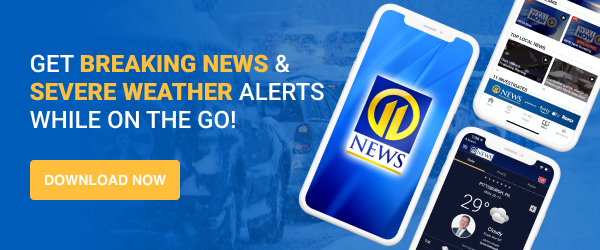PITTSBURGH — The Squirrel Hill Tunnels opened to traffic for the first time after a ribbon-cutting ceremony on June 5, 1953, marking the completion of PennDOT’s single most expensive road project to that date.
Traffic from Pittsburgh’s eastern suburbs had grown enough by the early 1920s that city planners began trying to find a faster route downtown. The Citizens Committee on the City Plan of Pittsburgh envisioned upgrading Second Avenue into a four- to six-lane boulevard that would extend all the way to Swissvale. In 1924, residents of Pittsburgh’s East End formed the Boulevard of the Allies Extension Association to promote the plan, and the Allegheny County Department of Public Works began preliminary studies.
TRENDING NOW:
By 1934, routes were proposed and being lobbied for, including one that centered on a new tunnel under Schenley Park. The Penn-Lincoln Highway Association was created and eventually settled on promoting a route nearly identical to today’s Parkway East, following a harrowing urban trek in 1937 to demonstrate its necessity to state officials.
The U.S. Bureau of Public Roads approved plans for the new highway on Sept. 16, 1938. The routes included plans for the Squirrel Hill and Fort Pitt Tunnels, but sufficient funding was not secured until 1941 when the Federal Public Roads Administration agreed to match state funds.
#ThowbackThursday to the 1940s: Construction of the twin-tube Squirrel Hill Tunnel near Pittsburgh - Michael Baker's first tunnel design pic.twitter.com/XAsp3sMd22
— Michael Baker Intl. (@MBakerIntl) March 9, 2017
Construction on the Squirrel Hill Tunnel started in 1946. The tunnel and its interchange were the first tunnels designed by engineer Michael Baker, Jr., who also later designed the Fort Pitt Tunnel. The firm that he started now employs thousands of engineers in nearly 100 offices nationwide from its corporate headquarters in the BNY Mellon Center on Grant Street.
Drilling started on Sept. 7, 1948. Excavation progressed from both ends, advancing 12 to 24 feet per day, with crews from both sides meeting in the middle on Sept. 15, 1949. About 400,000 cubic feet of earth was moved, much of it graded on the eastern side of the tunnel to form the approach to the Commercial Street Bridge over Nine Mile Run.
Three construction workers were killed during work on the tunnels out of a total of six who died completing that entire section of the Parkway East. The tunnels were the last link in the Parkway East’s first eight-mile section and cost $18 million to complete.
Gov. John S. Fine cut the ribbon to open the first section of the Parkway East on June 5, 1953. Ceremonies were held at the city side portal to the Squirrel Hill Tunnel.
The 4,225-foot-long twin tunnels have reinforced concrete walls that are 27″ thick. The original ceiling of the tunnel was made of suspended reinforced concrete slabs that were 6″ thick and housed a ventilation shaft topped by an arched outer roof that is about 3 feet thick. The flat concrete ceiling panels were removed in the 2012-2015 renovation to improve vertical clearance. That renovation project cost $49.5 million.
There are eight cross-tunnel passageways that can be used in the event of emergencies, with each protected by a fire door, fire extinguishers and hose valves for first responders to use.
The new tunnels had 2,312 light fixtures with 4,624 bulbs and eight ventilation fans (four in each portal building) to keep air moving and avoid the buildup of fumes that had nearly caused a disaster in the Liberty Tunnels.
The Tunnel Portal Buildings house maintenance garages and control rooms for the exhaust and ventilation systems. Each portal building is essentially the same, though the West Portal Building has a basement underneath. The exteriors are clad in sandstone and brick veneers, with louvered openings and glass block windows. An overheight truck detection system and traffic signals have been added to each entrance.
Beginning in 2000, a group of Carnegie Mellon University students under the leadership of professor Dan Stancil installed wires in the Squirrel Hill and Fort Pitt tunnels to ensure AM-FM radio and cell reception. PennDOT had received estimates from contractors that surpassed $100,000, but Stancil’s group did it at minimal cost, about $15,000 for Fort Pitt Tunnel.
Being able to enjoy their favorite songs during their tunnel transits has done little to alleviate the common frustrations of Pittsburgh drivers, however. Traffic still notoriously slows due to the perception change of approaching and entering the tunnels, an effect known as “optical flow,” where visual cues trick drivers into assuming they are driving faster than they actually are.
PennDOT engineers have tried to lessen this effect by installing brighter lights at the tunnel entrances to hasten eye adjustments, but the tunnel’s traffic flow is also hampered by ramps Jalopnik rated as the 2nd worst in the U.S. and U.K., where entering drivers are forced to stop and accelerate quickly as exiting drivers dodge them with a crossing merge point right at the threshold of the Eastbound tunnel.
©2021 Cox Media Group
:quality(70):focal(-5x-5:5x5)/cloudfront-us-east-1.images.arcpublishing.com/cmg/NWMOZEUQTFFT3NF33G4ADRBL24.tif)
:quality(70):focal(-5x-5:5x5)/cloudfront-us-east-1.images.arcpublishing.com/cmg/7MAKLENSBFGX5KSQUI7VEG44PM.tif)
:quality(70)/cloudfront-us-east-1.images.arcpublishing.com/cmg/OFWGC2SHDFB57FR2D3QILEZREQ.tif)
:quality(70)/cloudfront-us-east-1.images.arcpublishing.com/cmg/6AKAUYI3SZCBBFJ33OLISPVUXM.tif)
:quality(70)/cloudfront-us-east-1.images.arcpublishing.com/cmg/QHM2ILAGJJAN5E2C4KBKDKORY4.tif)
:quality(70)/cloudfront-us-east-1.images.arcpublishing.com/cmg/WFH5DIWB2FHPXOD6LHBMVBQYUA.png)
:quality(70)/cloudfront-us-east-1.images.arcpublishing.com/cmg/T2HSBVDKIBGCZDK62OOHYSG6HI.tif)
:quality(70)/cloudfront-us-east-1.images.arcpublishing.com/cmg/LGG4IKGJQNDGTFQ45ARG7YANX4.tif)
:quality(70)/cloudfront-us-east-1.images.arcpublishing.com/cmg/IKIWQDTPFFBRXJSX3T7QNPVCCU.tif)
:quality(70)/cloudfront-us-east-1.images.arcpublishing.com/cmg/5GS65V42ZJC5TCTX43BLUMNTQY.tif)
:quality(70)/cloudfront-us-east-1.images.arcpublishing.com/cmg/ABNHV7EL4BDOJPH27M55KVA6PU.tif)
:quality(70)/cloudfront-us-east-1.images.arcpublishing.com/cmg/3B6VFBSKHVDGDLFFSEMT75HMUM.tif)
:quality(70)/cloudfront-us-east-1.images.arcpublishing.com/cmg/4CA7KIT6BVC2BMVFCWYSDFYAMI.tif)
:quality(70)/cloudfront-us-east-1.images.arcpublishing.com/cmg/QW6O3HY4RZGBHPAB2DVZT2UE6I.jpg)
:quality(70)/cloudfront-us-east-1.images.arcpublishing.com/cmg/HVWOAQK5DJCJ5JZWOU6VROSH5Q.jpg)
:quality(70)/cloudfront-us-east-1.images.arcpublishing.com/cmg/4AU34JVNRBCQHFJKQX4ZVMXDLA.jpg)
:quality(70)/cloudfront-us-east-1.images.arcpublishing.com/cmg/YQCTDRQ5SBFUDMKTKULIP2D5EI.jpg)
:quality(70)/cloudfront-us-east-1.images.arcpublishing.com/cmg/HW36ZW776ZD2JLBZ5QYFIWRB7Y.jpg)
:quality(70)/cloudfront-us-east-1.images.arcpublishing.com/cmg/H6CENWNLWVHQTP4KHU6VMHGSSA.jpg)
:quality(70)/cloudfront-us-east-1.images.arcpublishing.com/cmg/DSVPPZS5A5B2VFG4YAG7IBHNSI.jpg)
:quality(70)/cloudfront-us-east-1.images.arcpublishing.com/cmg/3HPKSW3EF5GXBP57NEHF2I2UOY.jpg)
:quality(70)/cloudfront-us-east-1.images.arcpublishing.com/cmg/7M6FGYBSRFE7TFH3AZQED4X3F4.jpg)
:quality(70)/cloudfront-us-east-1.images.arcpublishing.com/cmg/7D2XQ3APAFEEPFQZFNFHC3CFZI.jpg)
:quality(70)/cloudfront-us-east-1.images.arcpublishing.com/cmg/DT2L62A4EJCHDEIXXJ4IFAI2ZY.jpg)
:quality(70)/cloudfront-us-east-1.images.arcpublishing.com/cmg/YF2HS7W7TFEAFOAOIBKR5HSWIU.jpg)
:quality(70)/cloudfront-us-east-1.images.arcpublishing.com/cmg/TYU4GCD4C5HTRIL6G3DGPIFA3Q.jpg)
:quality(70)/cloudfront-us-east-1.images.arcpublishing.com/cmg/44KE7NLSY5DVHLXJF5J4QJ7P2A.jpg)
:quality(70)/cloudfront-us-east-1.images.arcpublishing.com/cmg/IJWYNBOPUFBPXGPNQW5SIL34R4.jpg)
:quality(70)/cloudfront-us-east-1.images.arcpublishing.com/cmg/CRWMUBILWFGX5BUMK4CR453MIA.jpg)
:quality(70)/d1hfln2sfez66z.cloudfront.net/06-02-2021/t_89ffac19373d4355a37eb341179936f8_name_OTD_Squirrel_Hill_Tunnel___RAW_VIDEO577.jpg)

:quality(70)/cloudfront-us-east-1.images.arcpublishing.com/cmg/2FYLEBPFOZCDZOZ3LTPVHUXAZY.png)
:quality(70)/cloudfront-us-east-1.images.arcpublishing.com/cmg/JQXAIHCYDFCKJBKU2RKAWZFSGU.jpeg)
:quality(70)/d1hfln2sfez66z.cloudfront.net/07-25-2024/t_f4cd7cb9f3cf4b49b75b9aa896228fd9_name_theracerblocks11pp072424_frame_557.jpeg)
:quality(70)/cloudfront-us-east-1.images.arcpublishing.com/cmg/PFYBKJAJXBAFDFIOY6OBUDZY24.jpg)
:quality(70)/cloudfront-us-east-1.images.arcpublishing.com/cmg/OP4L4IUHEIWRTTX257DKOM4IMU.jpg)